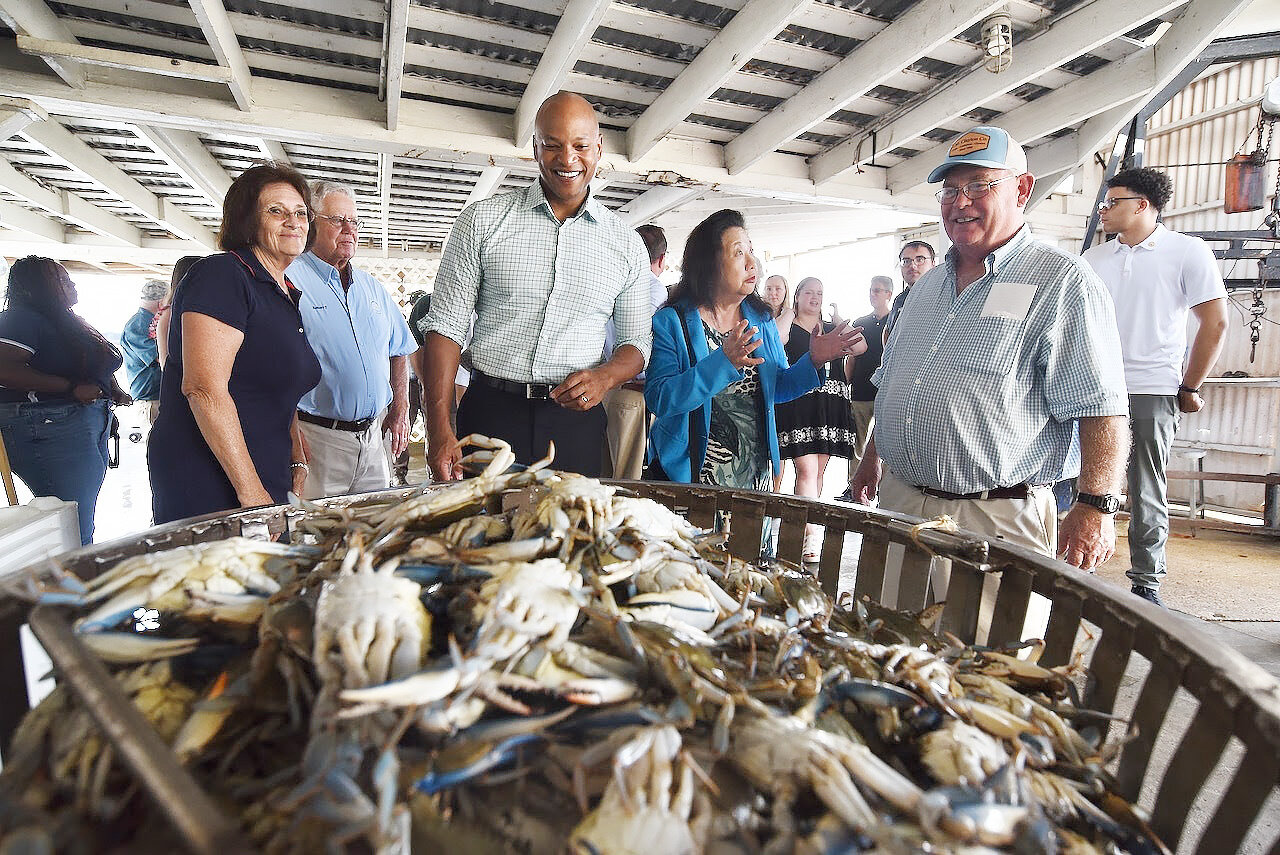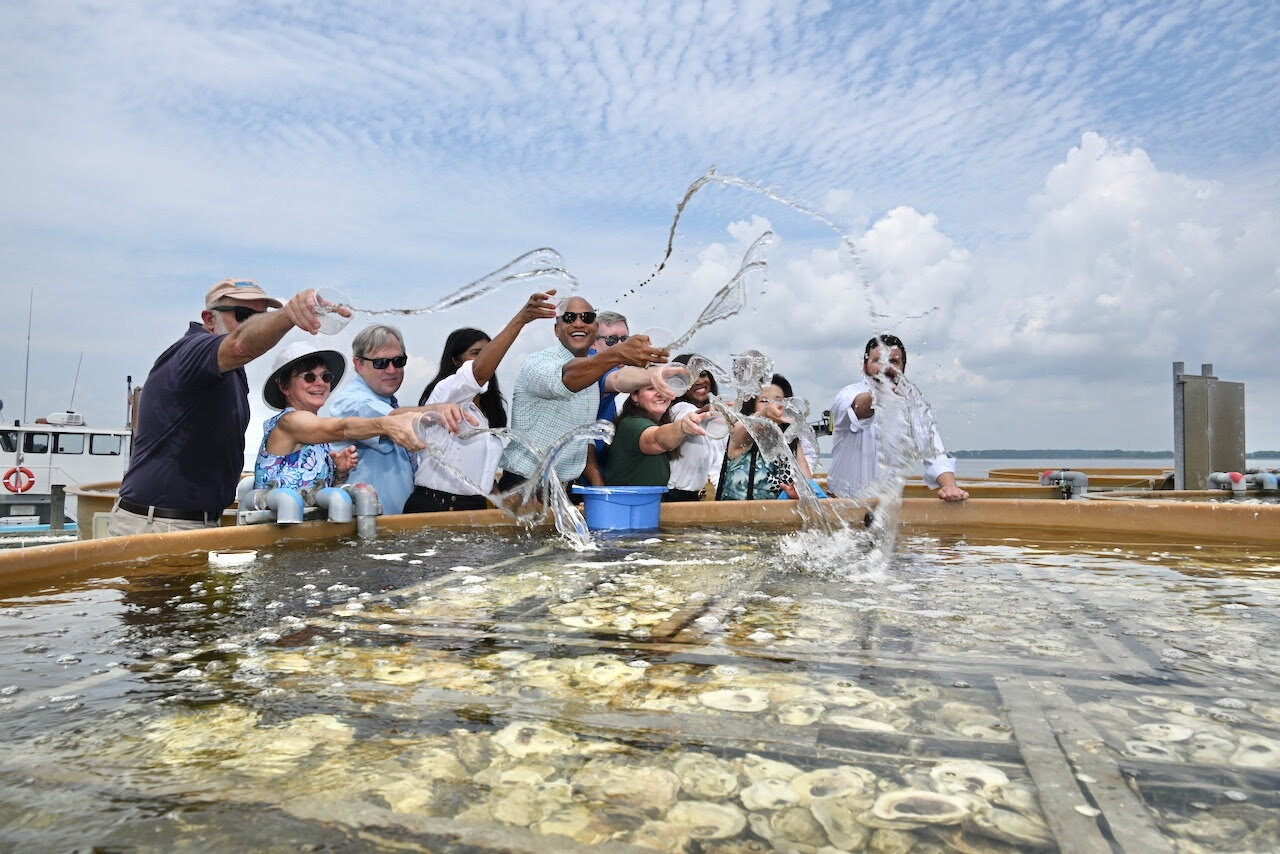Moore unveils two new environmental initiatives during steamy Eastern Shore visit
Say “task force” and most Marylanders’ eyes are sure to glaze over. And yet, these dull-sounding instruments of government can often be major drivers of important policy.
On …

You must be a member to read this story.
Join our family of readers for as little as $5 per month and support local, unbiased journalism.
Already a member? Log in to continue. Otherwise, follow the link below to join.
Please log in to continue |
Moore unveils two new environmental initiatives during steamy Eastern Shore visit
Say “task force” and most Marylanders’ eyes are sure to glaze over. And yet, these dull-sounding instruments of government can often be major drivers of important policy.
On Thursday, Democratic Gov. Wes Moore and several key members of his administration traveled to a steamy Eastern Shore to announce two policy initiatives that will be shaped, at least initially, by new task forces — one to strengthen protections to the Chesapeake Bay, the other to boost Maryland’s oyster industry. The administration officials visited a seafood packing plant and a farm for good measure.
Moore’s visit to the Shore on Thursday included stops at J.M. Clayton Seafood Co. in Cambridge, where he picked crabs alongside dozens of workers, and at a regenerative crop farm outside Easton.
The daylong visit began at the Wye Island Natural Resources Management Area in Queenstown. There, Moore, Lt. Gov. Aruna Miller and Natural Resources Secretary Josh Kurtz planted an oak tree along the Wye River, and Moore later signed an executive order creating the Governor’s Council on the Chesapeake Bay and Coastal Bays Watershed.
The new task force is being assembled as Maryland and the six other Chesapeake Bay watershed jurisdictions — Delaware, New York, Pennsylvania, Virginia, West Virginia and the District of Columbia — scramble to meet federal pollution reduction goals for the Bay and look ahead to a new regional strategy on Bay cleanup that is expected to be finalized next year.
Moore described the effort as a novel approach that places a greater emphasis on science and data, brings more stakeholders to the table and will pay as much attention to the environmental developments along shorelines and in shallower areas of the Bay and its tributaries as scientists currently do to the tributary’s deepest points.
“The Chesapeake Bay coalition is about more than just protecting a body of water,” he said. “It’s about how we come together to solve big problems.”
Moore said he hoped other Bay states would adopt Maryland’s model as they develop newer guidelines and protections. While Moore did not specifically say who would serve on the new council, he told reporters, “We see the build-out starting in very short order,” and said in addition to state officials, he wanted to ensure that the task force includes “people who are going to tell us their on-the-ground experiences.” He said he also expects the council to regularly provide metrics as it works its way toward developing state policy recommendations.
Later in the day, Moore and his entourage traveled to the University of Maryland Center for Environmental Science Horn Point Laboratory in Cambridge, site of an oyster hatchery, where he signed a second executive order, creating the Oyster Shell and Substrate Task Force. The task force is an outgrowth of 2022 legislation to bolster the state’s oyster population and aquaculture.
“The task force will be led by all sectors of the economy,” Moore said. “We’re going to build a table that’s big enough for every stakeholder to have a seat.”
As he did at Wye River, Moore described the health of Maryland’s oyster population as integral to the health of the Bay — and ultimately, to the health of the state economy. Oysters are bivalves that serve as natural filters for water pollution.
“Our oysters can go shell to shell with oysters from every other state,” Moore said. “But it goes beyond there. It’s about the workers [in the industry]. It’s the researchers. It’s the shuckers. Maryland won’t be outshucked by anybody.”
After signing the executive order, Moore and several members of his cabinet — Miller, Kurtz, Agriculture Secretary Kevin Atticks, Planning Secretary Rebecca Flora, Environment Secretary Serena McIlwain and Secretary of State Susan C. Lee — tossed oyster larvae that had been cultivated at the hatchery into a large tank of water, where they are expected to find purchase in shells at the bottom of the tank. Ultimately, the larvae are expected to grow into full-grown oysters. Every week, Horn Point dumps about 45 of these tanks with growing oysters into the Bay or its tributaries.
Republican lawmakers from the Eastern Shore attended both events and expressed cautious optimism — sprinkled with some skepticism — that Moore’s new task forces would be as inclusive as the governor promised and that they would produce the results that their constituents desire. But they saw Moore’s desire to solicit a full range of opinions as a hopeful sign.
“I’m anxious to see what the details are,” said Republican state Delegate Steven J. Arentz of Queen Anne’s County, at the Wye River event. “I do think it’s a great idea.”
Moore noted that Thursday’s trip was the 14th time that high-ranking officials had been to the Shore since he took office six months ago. Arentz also took that as a positive sign.
“If the governor’s going to show up here a lot, he’s going to start to understand the concerns of the people who live here,” he said.
At the Horn Point lab, Republican state Sen. Johnny Mautz of Talbot County called the governor’s remarks “right on point.” But he said his constituents would be looking for signs that the administration is looking to let the free market thrive for watermen.
“My constituents are very leery of the government saying it’s here to help,” Mautz said. “We want accountability. We want oysters. We want a clean Bay. We don’t want political achievements.”
Earlier this week, Mautz wrote to Moore, warning that local crab processors were being threatened by cheaper, imported crab meat, and urged the governor to use his influence with the Biden administration to push for federal tariffs on the imports. He said lump crab meat from Venezuela was selling for $11 to $12 per pound, and local crab processors, which as recently as last year were selling their product at $45 to $48 a pound, had dropped their prices to $32 a pound in an effort to compete.
“This is a very real and direct threat to our local processors, who need our support in renewing demands for federal tariffs,” Mautz wrote. “Although this situation is not new, it has been exacerbated by inflation, which is driving consumers to the lower-cost imports. Meanwhile, our processors are being forced to lower prices at the same time their costs of production are increasing.”









